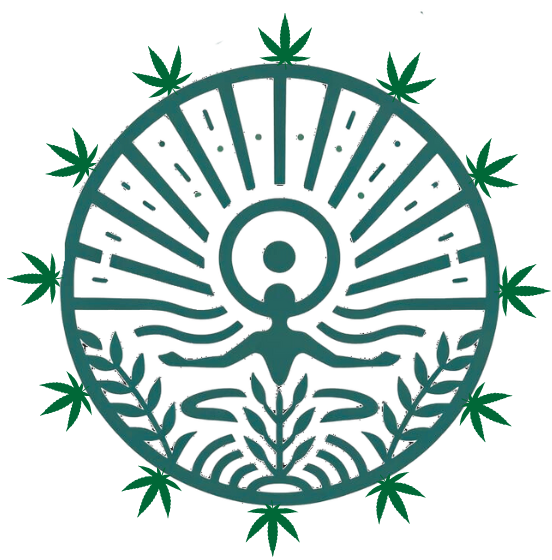Looking for inner peace in our busy world can feel tough, but help has been around for a long time.
But luckily, there exist timeless spiritual practices that have guided seekers toward tranquility and understanding for centuries.
These practices, rooted in deep philosophical traditions, offer more than just temporary solace — they provide pathways to transform your life from the inside out.
By embracing these age-old techniques, you embark on a profound journey inward, discovering serenity amidst chaos.
In this article, we’ll explore seven such practices that can revolutionize your life – if you let them. It’s all about your choice – your journey.
1) Reiki
Reiki, originating from Japan, is a spiritual healing practice that particularly fascinates me due to its emphasis on energy transfer.
For those who are unfamiliar, Reiki involves the practitioner channeling their own life force energy into the patient, in order to promote healing and balance.
The practitioner places their hands slightly above or on the patient’s body, aiming to manipulate the unseen “life force energy” that flows through us all.
The belief is that if one’s “life force energy” is low, they are more likely to get sick or feel stressed, and if it is high, they are more capable of being happy and healthy.
The appeal of Reiki lies in its simplicity and the profound sense of peace it can instill.
By focusing on energy transfer, Reiki encourages a deeper connection with the self and others, fostering empathy and understanding.
Now, keep in mind that REiki might not replace modern medicine. However, it can certainly complement it, offering a different perspective on health and recovery.
2) Chakra balancing
Chakra balancing is another ancient spiritual healing practice, this time originating from India.
It is driven by the concept of seven chakras, or energy centers, present in our bodies.
Each chakra corresponds to specific organs as well as physical, emotional, psychological, and spiritual states of being. The goal of chakra balancing is to ensure that energy flows freely through these centers, promoting well-being and harmony.
Here’s how this practice works:
When the chakras are balanced, they spin freely, allowing energy to pass through them. When they are blocked or imbalanced, it can lead to emotional or physical ailments.
Let’s take the Heart Chakra for example.
This chakra, located in the center of the chest, governs our capacity for compassion and love. When it’s balanced, we feel open and life seems abundant. But when it’s blocked or unbalanced, we might feel disconnected or struggle with relationships.
The practice of chakra balancing can be achieved through various techniques such as meditation, yoga, color, and sound therapy, amongst others.
With regular practice, it’s believed that one can keep these energy centers in harmony and lead a healthier and more fulfilled life.
3) Shamanic healing
Rooted in the indigenous cultures of the Americas and Siberia, Shamanic healing may seem a bit counter-intuitive at first.
Basically, Shamanic healing revolves around the Shaman — a spiritual healer who can traverse the spiritual world to seek solutions for physical and emotional ailments.
It’s an approach that not only addresses your physical health but also connects you to your spiritual self and the universe.
Interestingly, the healing process often includes what is known as a ‘journey’ or ‘soul flight’.
The Shaman, in a trance-like state, enters the spiritual realm to retrieve information or conduct healing rituals.
But again, it’s crucial to note that Shamanic Healing doesn’t replace traditional medical practices. Instead, it complements them by addressing aspects of health and well-being that conventional medicine might overlook.

4) Ayurveda
Have you ever considered the idea that your health is directly linked to the balance of energies within your body?
This is precisely the cornerstone of Ayurveda — a 5000-year-old healing practice from India.
Ayurveda translates to ‘life-knowledge’, and it aims to promote good health rather than fight disease.
The practice believes in the fundamental connection between the self, the universe, and the five basic elements: earth, water, fire, air, and space.
According to Ayurveda, each person has a unique constitution or ‘dosha’, which is a specific combination of these elements.
The three doshas – Vata (air and space), Pitta (fire and water), and Kapha (earth and water) – govern all physical and mental processes. An imbalance in these doshas could lead to health issues.
While it might seem esoteric at first glance, Ayurveda is deeply personal. It encourages self-study and understanding of your own body and its needs.
5) Traditional Chinese medicine
Traditional Chinese Medicine (TCM), with its roots in ancient China, offers a unique perspective on health and healing.
TCM believes in the concept of Qi (pronounced “chee”), the vital energy flowing through our bodies.
According to TCM, illness arises when the flow of Qi is blocked or imbalanced. It emphasizes restoring this balance through various practices such as acupuncture, herbal remedies, Tai Chi, and Qigong.
But what makes TCM stand out?
- Emphasizes prevention over cure
- Considers mental and physical health as interconnected
- Focuses on individualized treatment
In essence, TCM teaches us that health is not merely an absence of disease but a state of complete physical, mental, and social well-being. It’s a powerful reminder that we have an active role in our own health journey.
6) Sound healing
Sound healing, a practice that traces back to ancient Greece, stands out for its simplicity and effectiveness.
The basic idea of this practice is the use of sound frequencies and vibrations to heal physical and emotional ailments.
I’ve always been captivated by the transformative power of music and sound.
Let’s face it, we’ve all experienced how a particular song or sound can shift our mood, bringing peace, excitement, or even nostalgia.
Sound healing elevates this experience, using specific frequencies to stimulate healing responses in the body. Techniques vary from singing bowls, tuning forks, and drumming to guided meditation with music.
The premise is that different frequencies can interact with our body’s energy fields, promoting relaxation, reducing stress, and even alleviating pain.
What I find remarkable about sound healing is its accessibility – you don’t need special equipment or extensive training.
Even simply listening to calming music or nature sounds can be a form of sound healing. It’s a gentle reminder that sometimes, the most profound healing can come from the simplest practices.
7) Meditation
Finally, we cannot overlook the significance of Meditation, a practice rooted in numerous ancient cultures, including Indian, Chinese, and Egyptian.
Meditation is more than just a technique for relaxation. It’s a pathway to self-discovery and inner peace.
By focusing on our breath or a particular thought, we learn to quiet the mind and enter a state of deep tranquility and awareness.
The beauty of meditation lies in its versatility. It doesn’t require any special tools or settings – you can meditate anywhere, anytime.
What’s more, meditation can be tailored to suit individual needs. Whether it’s mindfulness meditation, transcendental meditation, or loving-kindness meditation, each style offers unique benefits.
While it might seem simple on the surface, the impact of meditation runs deep. It invites us to tap into our innate potential for peace and wellness and encourages us to cultivate a mindful presence in all aspects of life.
Exploring your path towards holistic well-being
With these ancient spiritual healing practices, we see how our ancestors understood the profound connection between body, mind, and spirit.
All these practices recognize the importance of balance and harmony in promoting health and well-being.
To sum up:
- Reiki teaches us about energy transfer.
- Chakra balancing emphasizes energy flow.
- Shamanic healing highlights our connection with the spiritual world.
- Ayurveda encourages us to understand our body’s unique needs.
- Traditional Chinese medicine reminds us of our body’s interconnectedness.
- Sound healing demonstrates the power of frequencies and vibrations.
- Meditation invites us to explore our inner selves.
These practices offer valuable insights as you continue your exploration of holistic health and wellness. They encourage self-awareness, open-mindedness, and a growth mindset.
Consider these practices as tools in your toolkit for holistic wellness. Experiment with them, explore their benefits, and see which ones resonate with you.












